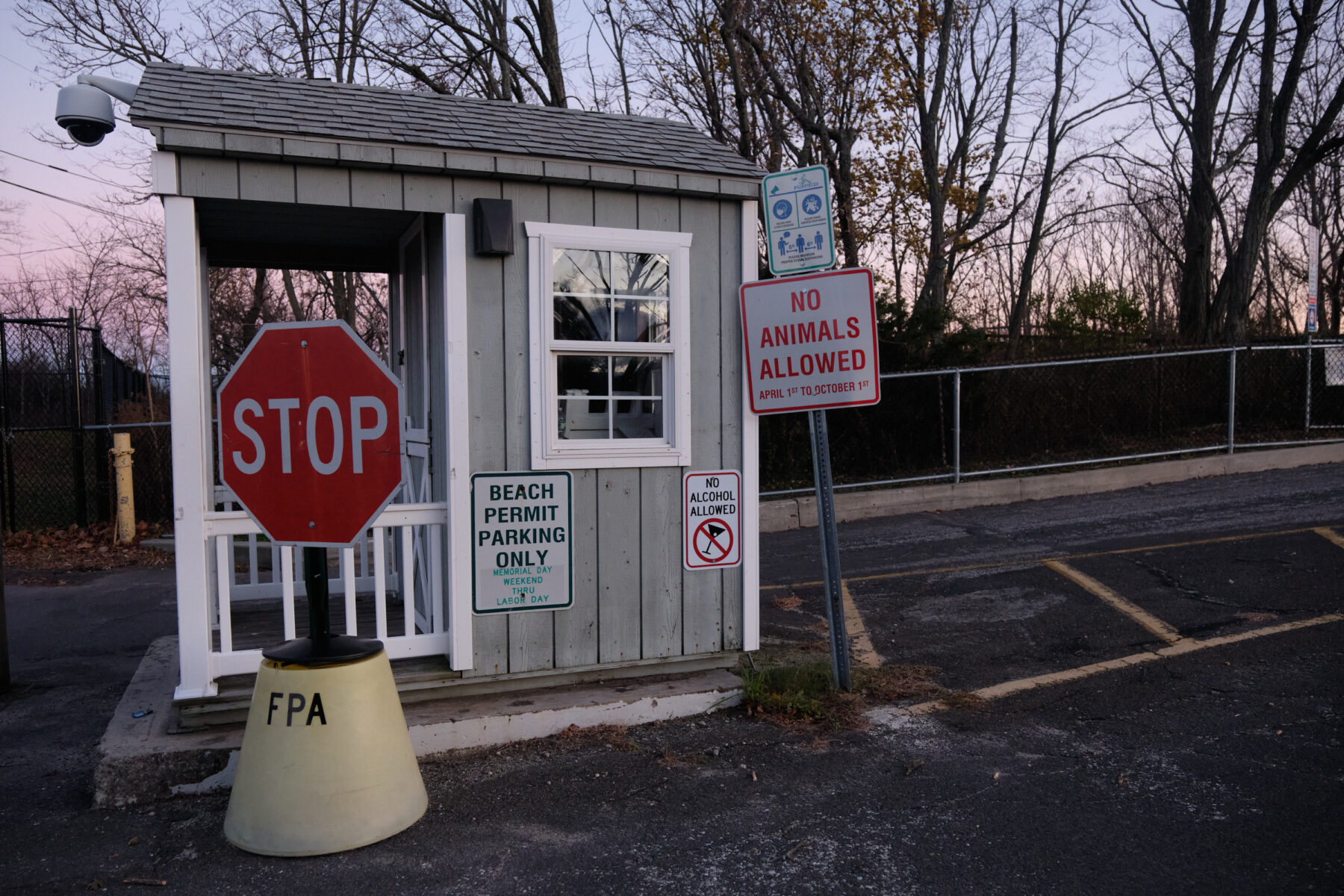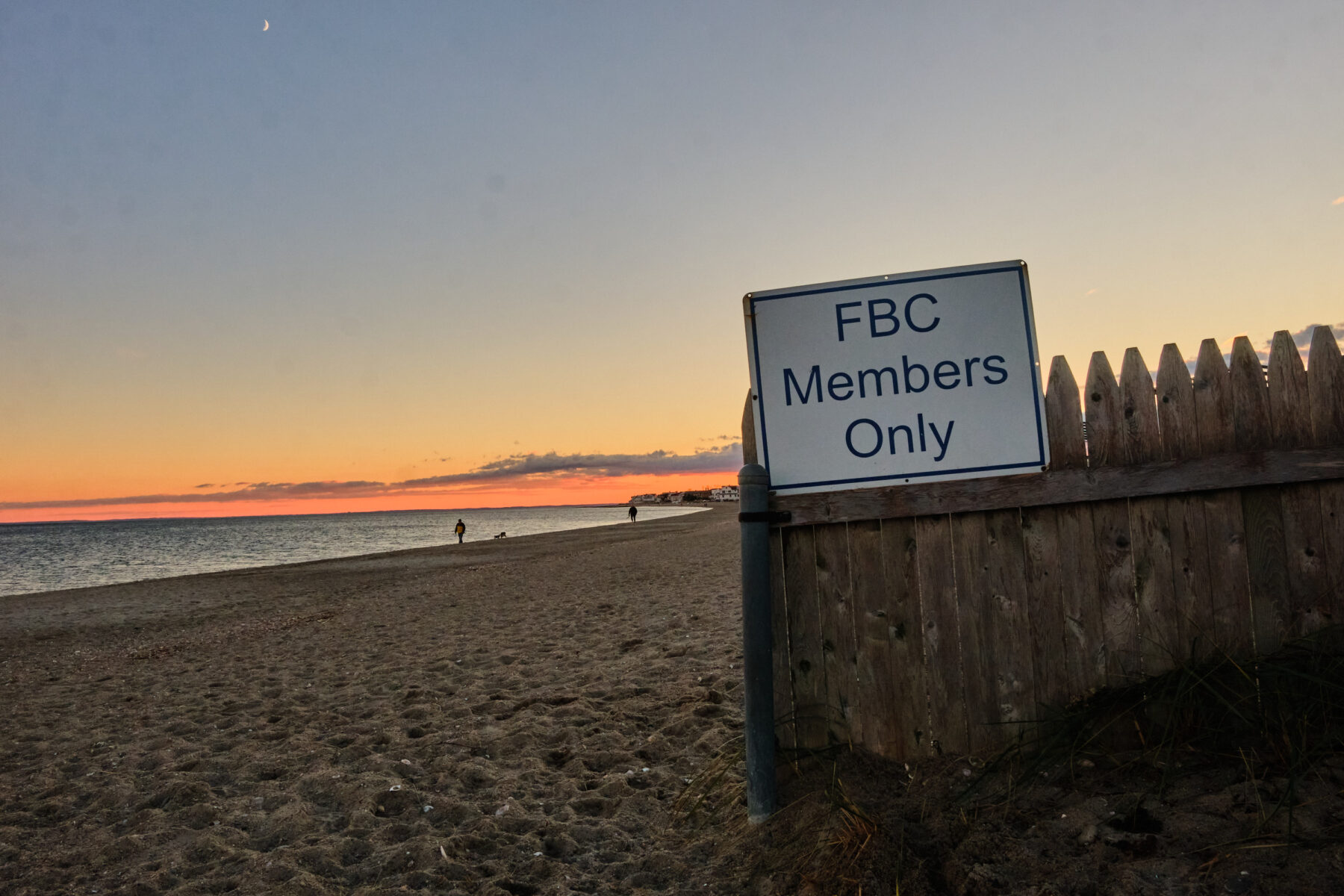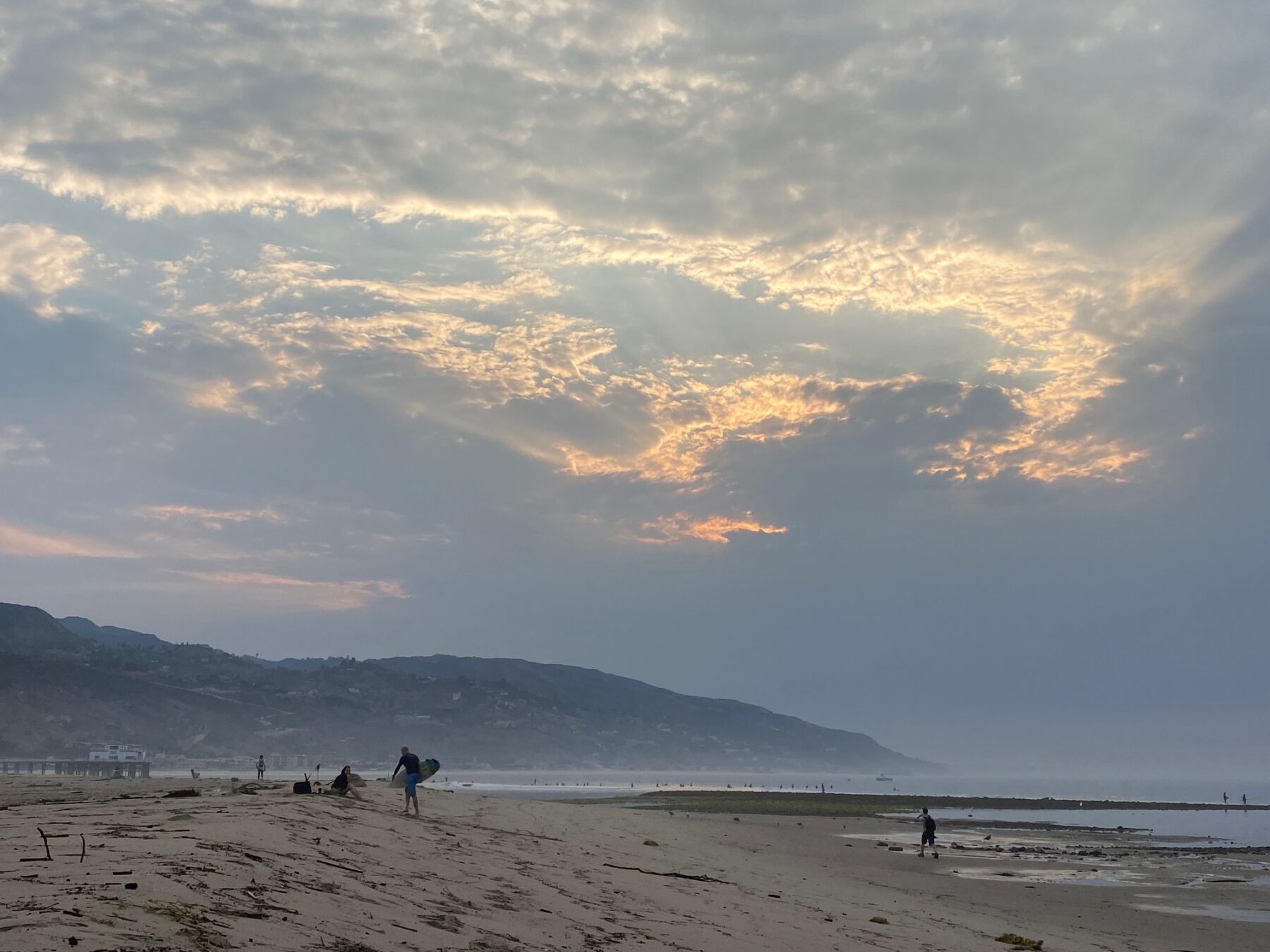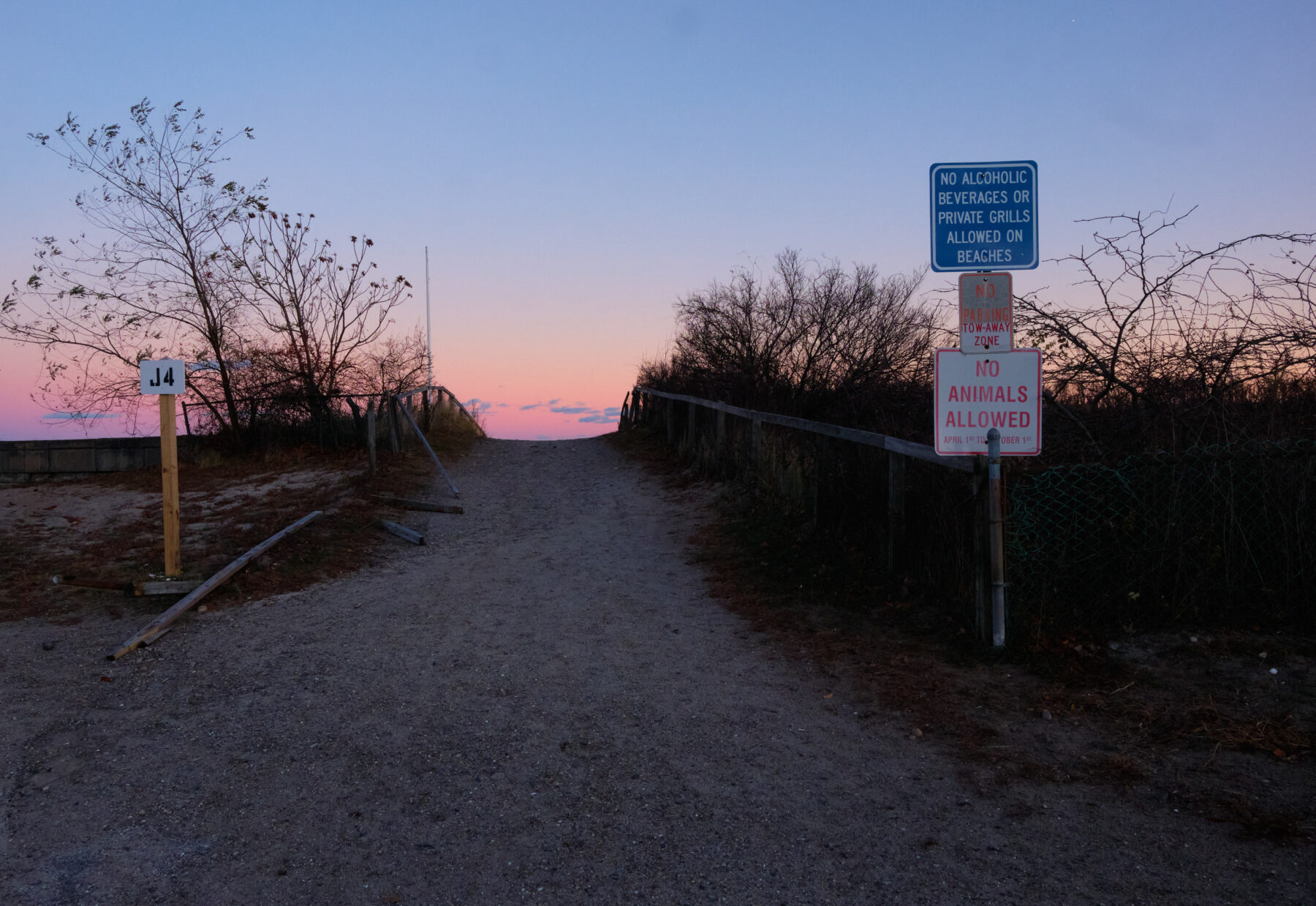Rosy gray and hazy blue Venice Beach days have marked nearly every week of the last fifteen years of my life. The stretch of sand between Lifeguard Towers 30 and 38 has seen my mom, my aunts, my sister, and me gain too many constellations of freckles to count. We store decade-old boogie boards and scratched-up beach pails up the block at the far end of the hallway in my grandparents’ apartment; the jury is still out on whether our gear is worn-in or worn-down. My family insists on reminding me that when we first moved from Managua to Los Angeles, I was none too fond of our coastal Californian afternoons. I missed warm lake water and the tried-and-true stability of Marco Polo and a pool—and I made it everybody’s business. I may have hated the lingering tendencies of sticky sand, but I soon learned to love the cold Pacific. I found cigarette butts, sandcrabs, and claw machine treasures all in scoops of sandy mud. I held open houses for my drip-dry castles, I chased down kites, I poked my mom for another ziplock bag of grapes or goldfish. I bugged my dad and older sister to brave the waves with me, arm-in-arm.

Venice Beach, California, 2010.
Connecticut’s beaches are grassy by comparison. From the Waterford Beach dunes to the Calf Pasture pier, the state’s 338 miles of jetty-ridden shoreline stretch into the cold Atlantic. This past summer, however, I learned just how hard it is to visit Connecticut’s beaches: throughout the state, local restrictions have transformed Connecticut into one of the most exclusionary shorelines in the country.
24 of Connecticut’s 169 cities and towns border the Long Island Sound. Over half of Connecticut’s population lives in coastal zones defined by these cities’ borders. Across the state, municipal beaches have curbed non-resident access to their shores by charging skyrocketing rates for seasonal passes. Westport, for example, charges out-of-towners over fifteen times more for beach parking than its residents—$50 a season for residents and $775 for everyone else. In Stamford, residents pay a flat rate of $26 a season while non-residents pay the town $292. New Haven’s beaches hold some of the state’s least financial restrictions—with the famed Lighthouse Point Park charging non-residents $25 per day or $100 for the summer season. But just a few miles away, West Haven keeps the bar to entry high, requiring non-residents to pay more than double New Haven’s ask, at $250 for the season.
“Connecticut beaches are gated in ways that should be offensive to every resident of one of those towns,” said New Haven and East Haven Connecticut State Representative Roland Lemar, on a call with me in late September. “In essence, too many public beaches in Connecticut have become country clubs.”
Exclusionary beach fees render the coast economically inaccessible to all but the towns’ wealthy and predominantly white residents. These fines are more than a summertime inconvenience: they perpetuate a persisting legacy of racial and economic exclusion in New England. They are emblematic of national manifestations of rampant injustice which certainly do not begin or end at the coast.
The emergence of private beaches in Connecticut can be traced back to the 1880s, when the state legislature granted a charter allotting self-government to affluent families who had converted Old Saybrook into their new vacation haven. Early twentieth century commercial developers then bought up the state coastline, converting farm and forest lands into vacation homes packaged for middle-class whites. Charters barred non-residents from operating parks, beaches, and streets, and they explicitly enacted racially restrictive housing covenants preventing Black and Jewish buyers from becoming coastal homeowners.
Even after the Fair Housing Act was passed in 1968—which prohibited housing discrimination by landlords, municipalities and other housing providers on the basis of race, sex, religion, national origin, familial status and disability—these racially discriminatory real estate practices persisted. Local policymakers made the switch to using language that centers one’s residential status to perpetuate these segregating measures. Today, thinly veiled, racially coded language bars “non-residents” from beachside parking or weekend beach access in beach towns like Westport. And, in many locales, these restrictions are also reflected in the accessibility of housing and renting. Combined, they make the possibility of a beach weekend in some regions in Connecticut unfeasible.”
“The towns that are most egregious in establishing these differential rates for parking are the towns that have made it almost impossible for folks to move into those communities,” Lemar reflects. He speaks with equal parts history teacher authority and soccer dad optimism. “The Greenwiches, the Fairfields…[these towns] have very restrictive zoning laws that don’t allow for multi-family homes or for new home construction. They essentially close off their borders purposefully to new occupants. And then they say ‘our beaches are only for people who live here.’”
Today, Greenwich bans multi-family housing on over 95 percent of its land, despite the fact that multi-family homes once drove the town’s suburban growth. This push to build a community made almost entirely of single-family homes, and therefore push out lower-class and often non-white residents, was bolstered by a 2017 Planning and Zoning Commission measure to formally ban multi-family developments in the neighborhood. Fairfield has followed suit, as exhibited by some Fairfield homeowners’ active resistance to state-mandated affordable housing developments within their town in the interest of protecting their uniform wealth and whiteness.
Effectively denying out-of-towners and the non-wealthy access to the beach is part of a legacy of broader policy patterns like restrictive zoning that continue to engender segregation in Connecticut neighborhoods. Andrew Kahrl, professor of history and African American studies at the University of Virginia, studies the environmental history of land use and segregation in the twentieth century, particularly in Connecticut and the American South. An even-tempered academic, he talked through the phone with a punchy, resolute tone. He unflinchingly classified Connecticut as a state whose restrictive beach practices had a clear racial effect, “even if they disclaimed racial intent.” He stressed that the creation of resident-only, private beaches in the Northeast served as an example of local government-sanctioned practices of blatant segregation.
“In practice, Connecticut is a profoundly segregated state around racial and class lines,” Kahrl told me. “[White and wealthy] communities fight like hell to prevent affordable housing, equitable public schools, and shared public resources.”
In the predominantly white, wealthy shoreline communities that Karhl and Lemar refer to, local signage bear declarations such as The beach has reached capacity, or Non-residents have to pay their fair share. These signs and fees serve as tangible manifestations of the beach town belief that its residents have an unquestionable right to their adjacent coastlines, while non-residents do not.


Others point to the financial inequity that they believe would follow from expanded Connecticut public beach access. As reported by the Greenwich Free Press, Brian Farnen, formerly a Connecticut State Representative in Fairfield (D-132), insisted on looking at the question of beach access from “an equity perspective”—that is, financial equity. As a reason for limiting beach access, he cited a perceived imbalance in tax dollars: Fairfield residents sent too much to the state capital, he wrote, when considering the funds that they received back to invest in their local community.
“Our typical resident…is paying so much money in property taxes to upkeep these beaches, [and] yes they should get that benefit,” Farnen noted.
State representatives like Lemar were quick to remind me that the idea that these wealthy coastal communities were primarily responsible for their beach’s upkeep is a fallacy. In reality, the Long Island Sound and its beaches are kept clean by state and federal governments. They invest hundreds of millions of dollars annually in sewage treatment and other wastewater management—dollars which, ultimately, come from Connecticut residents, many of whom will be excluded from the beaches they help pay for.
“They’re not charging differential rates because they need help upkeeping their beaches,” Rep. Lemar insists. “That’s a bold-faced lie. They’re charging differential rates to keep people out.”
New Haven beaches rank low in terms of restrictive access to the coast along the Long Island Sound. But the pandemic, Lemar told me, offered public health restriction justification to limit beach access, even in previously accessible locations. This shift spurred Lemar to look at beaches through an equity lens—and in turn made his concern for the future of Connecticut beach accessibility heighten.
“[I soon saw] that what started off as capping off beaches from a health and safety justification quickly shifted to lingering resident-only regulations,” Lemar recalled, thinking back on summers in the state once COVID-19 cases had begun to decline. “I saw this right here in East Haven, which shut down access to the beach and went out of their way to ticket and tow non-locals, like my constituents in New Haven. The refusal to relax those rules after public guidance had relaxed, along with the continued expansion of these differential rate structures, points to an underlying racial prejudice in the state and a [hoarding] of the very things all those in Connecticut should have the right to access.”
The myth of local beach upkeep functions in the interest of municipalities, who then monopolize these shorelines at the cost of widespread public access.
“But all waters run to Long Island Sound: whether they like it or not, the whole state is involved,” Connecticut State Representative Michael Winkler of Vernon, Connecticut (D-56) echoed.

My mother grew up a block away from the infamously-bustling and borderline-mythical Venice Beach boardwalk: an ecosystem defined by screenwriters with a dream, skaters with a cause, and NIMBY-homeowners with a fight to pick. My grandparents still live in a century-old Californian apartment building in sight of the water. It’s the beachside heartbeat of our family.
About twenty miles west of the Rose Avenue Beach Tower in Venice stretches the long-fraught Malibu coastline, in which public access to the beach has come at an unearthly price. With the city’s founding came the violent desecration of sacred Chumash land, as present-day Malibu stood as the southern capital of the 200-mile spanning Chumash territory. Since its unlikely inception as the “Malibu Movie Colony” by the railroad-rich Rindge couple in the 1930s, Malibu persists as the poster-child for private property and public trust disputes in the state. Just as Rhoda May Knight Rindge—the “Queen of Malibu”—once unsuccessfully attempted to block the construction of the Pacific Coast Highway through the Malibu Pier in order to tuck Malibu away from widespread public access, Malibu’s billionaire elite have been closing off their beach fronts for decades. They’ve used public intimidation tactics to scare off visitors, along with clout and capital to try to justify their exclusive right to the sea.
“There’s a sense in L.A. that if you’re rich you have earned the right to be insulated, to not have to live next to public lands,” formerly L.A.-based environmental organizer and public artist Jenny Price GRD ’98 said to me. “What that means is that many people can’t get to the beach that they can see out their window.”
I wanted to better understand how the idea of access and upkeep are at play by the Pacific, so I spoke via Whatsapp with environmental historian and Southern Californian beach scholar Elsa Devienne. A Parisian native who for a decade has dedicated her research to the study of Southern Californian beach culture and climate, she called me while on holiday back home in the French countryside. She managed to both poke fun at our spotty telephone signal and solemnly discuss climate scientists’ predictions that sea level rise in the West Coast will reach 8 inches by 2050, leaving all but the largest Malibu beaches, like Zuma, swept below flood levels.
“Beaches are what climate engineers call ‘rivers of sand,’” Devienne noted. “L.A. beaches were artificially enlarged in the seventies with generated sediment in order to meet rising demands to create modern beaches for a modern city. And due to a combination of both climate change and standard beach deterioration, they’re rapidly eroding.”
It’s a stunning and disconcertingly equalizing omen: even these coveted, star-studded beaches are not built to last. And still, fights for equitable public beach access along Broad Beach and other famed Malibu beach fronts persist along this degenerating coastline.
Malibu property owners have pushed back against expanding public beach access since the beachtown’s unlikely inception in the early twentieth century. Notably, American billionaire and entertainment industry mogul David Geffen made headlines in 1983 when purchasing his beach mansion, which conjoined two existing properties and blocked a state-mandated sidewalk-to-shore public pathway. He made the news again in 2002 after refusing to make public easements or beach access points on his Carbon “Billionaire’s” Beach Malibu home. Yet, in 2007, after substantial pushback, he agreed to open up a 42-foot stretch of the prized Carbon Beach to the public in exchange for a 10-foot privacy go-between. Despite this seemingly small-scale victory, Geffen’s concession marked a historic and precedent-setting win for the state.
“The best way to make a beach public is to get the public onto it,” Price said. “You have to learn which signs you can smile at and which you can ignore.”
California is the only state to enforce public beach access thanks to the regulatory powers of the California Coastal Commission, an organization created by the state’s voters in 1972 amidst a rise of coastal and environmental activism in the 1960s and 1970s .
In early August, Linda Locklin called me from her turquoise blue, knick-knack filled office space in Santa Cruz, California. She speaks with a warm, instinctive grin. Locklin lets me know that she’s been the Coastal Access Program Manager for the commission for over three decades. She dreamed of marrying her interests in environmental planning and fieldwork with public benefit, and she feels she has achieved just that. She fearlessly loves this agency, what it stands for and what it defends.
Locklin speaks proudly of the critical victories the commission has secured. Through their issuing of permits for development across 1.5 million acres of state coastal lands, over the last thirty to forty years, the California Coastal Commission has been able to successfully obtain public walkways between houses on private property and public lands, despite private homeowners’ perpetual resistance to state regulations. She notes that widespread present-day access to Malibu beach fronts stands as an example of how the public right to beach space can win out against the muscle of capital.
“People have always known they’re welcome in vast public beaches like Zuma or Surfrider, but it takes gumption to walk down recently-opened public pathways to smaller beach fronts…” Locklin reflects. “They make you feel like you’re not wanted even though you have every legal right to be there.”
Now the Coastal Commission has the power to levy fines against public access violators, such as resistant coastal homeowners. They often go to court and, Locklin boasts, they have yet to lose.


In notes directed at the Connecticut state legislature opposing Rep. Lemar’s coastal equity bill, state residents from historically restrictive coastal suburbs like Fairfield and Greenwich said things ranging from: “As municipalities have seen over the years, Hartford creates an issue where there is not one and then passes the buck” to “I hope that you will reconsider, otherwise you will be ruining our town!”
Other opponents believe beaches are a scarce resource that must be limited in order to avoid overwhelming capacity numbers.
Connecticut State Rep. Steve Meskers (D-150) of Greenwich explained that the popular beach destination, Greenwich Point, contained 1,100 parking spaces, while the town consists of 60,000 residents. He voiced that capacity was nearly oversaturated as is, particularly on summer holiday, and there was no obvious area for additional beach parking or practical train transit.
“I’m not sure how I grant more incremental access,” Meskers told the Greenwich Free Press.
He further outlined that no state bills considered the over-extension of public access to non-state residents; shorelines like Greenwich touch the New York border, and are a common destination for residents of both states.
“I’m concerned I’m being asked for reciprocity to residents of another state,” Meskers suggested.
At the beginning of the century, many state beach activists hoped the issue of undue beach restrictions had been settled. Although the Connecticut Supreme Court ruling in Leydon v. Greenwich in 2001 affirmed the right of non-residents’ use of municipal beaches, beach restrictions still run rampant. As a result of the Leydon ruling, non-residents are now legally allowed onto municipal beaches, but due to an onslaught of town-ordered financial penalties, the act of doing so continues to be feasibly impractical. In response, in July of 2021, the American Civil Liberties Union named financially restrictive beach policies in counties like Greenwich and Westport as present day examples of de facto segregation. They also accused these measures of violating the Public Trust Doctrine, which ensures the public’s right to land above the mean high water line in coastal states like Connecticut.
For the last two years, and most recently this past spring, Rep. Lemar has led the charge alongside other state government officials to push for reform through the enactment of HB 5361, an unpassed bill which aims to implement financial penalties to counties who do not abide by beach equity standards. After years of refraining from commenting on the subject, this spring, Connecticut Governor Ned Lamont—a Greenwich native—agreed there should be studies on the matter of beach access, withholding any definitive stance on the topic beyond supporting the “bipartisan effort to take a closer look at this important issue.” Lamont and other suburban shoreline candidates have sidelined this issue, likely due to an unwillingness to rock the political boat from the interests of politically influential suburbanites.
“Voters don’t want studies, voters want solutions,” Rep. Winkler retorted on a call with me in July, urging the governor to both acknowledge and take a stand against systemic class and racial disparities by the coast. But months later, in November, Ned Lamont would go on to win re-election for governor.

Beach climate scholar Devienne acknowledges that coastal access is embedded in Californians’ sense of what is right and what is their right. Emboldened by the protections offered by the Coastal Commission and precedent-setting efforts to fight for public space, they seem to possess an inherent belief that the every-day non-billionaire is entitled to coastal leisure, that one cannot simply weaponize their whiteness and wealth to warrant an unjustifiable claim over nature. Despite a deep-rooted history of exclusivity, evident in Connecticut’s implicit and explicit removal of Black and Brown beachgoers and beach town residents, a determined contingent of present-day Connecticut residents seem to echo these sentiments for protected public beach access.
Still, the environmental and social history of contested state and public land is irrefutably tied to the history of Indigenous removal, Black exclusion, and the preservation of whiteness in the outdoors, measures of erasure most often achieved through state violence. It may seem dangerous and illogical, therefore, to encourage state regulation as a means of pacifying the interests of local governments and rich landowners, and in turn addressing their particular wrongdoings, let alone in re-introducing a collective protection of leisure and the outdoors. While these reforms might successfully ensure the public right to access the outdoors in legal terms, how these protections will manifest in government action, particularly as coastal lands become more and more of a scarce resource as the climate crisis progresses, is yet to be seen.
What is certain is that exclusive beach access and its restrictive practices are extensions of long-ingrained systems of racial exclusion. And the protection of wealth and cementing of privilege come at a steep price: the perpetuation of a generations-spanning landmine of exclusion. All of this tug-of-war comes as climate-caused coastal flooding promises to wreak havoc on anybody unlucky enough to stand in its way, neither discriminating by race nor class. It may be that the coastal beach-house billionaires are less territorial of their beachfront in the coming decades. It may be that as these beaches erode, so might the issue of beach access. Rest assured, however, that from coast to coast, there will continue to be calls to free whatever beach that remains.
—Paola Santos is a sophomore in Davenport College and an Associate Editor of The New Journal.


